EPA Clean Water Rule Meets Political Pushback
Unlike previous eras, Congress has avoided adjusting the law to manage new conditions.

By Brett Walton
Circle of Blue
In an era of fierce and frustrating political division, legislative collaboration is exceedingly rare. In few arenas of government is the stalemate more clear than in legislative oversight of the nation’s land, air, and especially of water.
Though toxic spills, sewage overflows, salts, contaminated stormwater, and nutrient-rich wastes from big confined animal production facilities and farmland runoff are pouring into the nation’s coastal areas and freshwater reserves, Congress emphatically resists updating the Clean Water Act, one of the nation’s landmark environmental laws.
Congress last amended the law in 1987. The nation’s waters are undoubtedly cleaner today, but serious impairments remain. Algae blooms choke the western basin of Lake Erie each summer. The flush of nitrogen and urban grime into Chesapeake Bay from rainstorms is growing. Salts from roads and nutrients from fields are flowing into rivers at increasing rates. Pollutants from coal ash piles and manure from livestock and poultry operations rushes unfiltered into the nation’s waters.
The 21st century history of the law, moreover, also is graphically reflected in the differing views on environmental responsibility of the Obama White House, and the Bush administration before it.
President Obama has largely avoided resistance from Republican lawmakers and dispatched the Environmental Protection Agency and other federal departments to install expanded Clean Water safeguards to stem pollution from mines, sewage plants, electrical generating stations, farms and oilfields. The president’s executive level actions also encouraged the EPA and the Justice Department to more aggressively pursue big civil and criminal water pollution cases. Just last month BP agreed to pay $US 18.7 billion to settle all federal and state claims related to the 2010 Deepwater Horizon oil spill in the Gulf of Mexico. It was the largest water pollution and environmental fine in U.S. history. In May, Duke Energy agreed to pay $US 102 million in fines as restitution for a coal ash spill into the Dan River in North Carolina, and for mismanagement of coal ash at other power plants.
Most recently a new Clean Water rule, drafted by the Obama administration and opposed by Congress and many states, to clarify the law’s reach into small streams is set to take effect on August 28.
The Bush administration established a different strategy for clean water oversight and enforcement. The White House, following the lead of the act’s opponents in Congress, pursued court cases to weaken oversight of safeguards for wetlands and pollution from industry, and supported Congressional efforts to pull back the law’s reach. According to a Congressional investigation in 2008, the Bush administration neglected, dismissed or failed to prosecute more than 500 enforcement actions it was pursuing following a 2006 U.S. Supreme Court ruling that altered federal oversight of some wetlands.
The result is that an environmental statute enacted in 1972, and specifically designed to be periodically updated to reflect new conditions, has existed in a state of stasis — neither advancing very far nor retreating very much as the nation’s water quality needs change.
“We’re hanging on to the laws we have on the books,” Pat Parenteau, senior counsel and professor at Vermont Law School, told Circle of Blue. “We’re trying to keep Congress from dismantling environmental protections.”
Water Used to Unite
The ideological battle lines for clean water were not always so stark. Parenteau recalls that the political tone on Capitol Hill in the late 1970s, when he was working as counsel for the National Wildlife Federation and litigating Clean Water Act cases, was a striking counterpoint to the entrenched positions today.
“There were arguments and debates, which were vital to asking hard questions about the costs of the Clean Water Act and the level of government that should be involved,” Parenteau said. “The debate was rich, intellectual, and grounded. It was not perfect but it produced results.”
The results were needed. Two-thirds of the deep water in Lake Erie in 1966 did not hold enough oxygen in the summer to support aquatic life, according to an EPA analysis, which asserted that the lake was “prematurely aging.” Beaches were often closed because of fecal bacteria. Rivers burned.
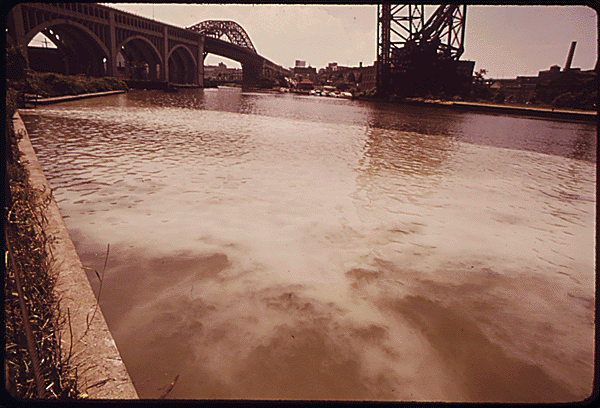
As the crippling effects of industrial pollution on public health, wildlife, and the social and economic vitality of cities grew more apparent in the post-World War II era, Congress, with increasing frequency, revised and strengthened the Federal Water Pollution Control Act of 1948, the first major federal water law. Congress passed amendments in 1961, 1966, and 1970 that authorized water pollution research programs, prohibited the dumping of oil in national waters, established the Environmental Protection Agency, and funded a string of pollution-control projects along the Great Lakes, then a dumpster for the heavy metals, nitrates, ammonia, chlorides, and phosphates that were toxic byproducts of industrial and urban development.
Deeper, far-reaching reforms came in 1972, when the Federal Water Pollution Control Act was retrofitted into an all-purpose vehicle to make the nation’s waters fishable and swimmable, activities that are now perhaps taken for granted but at the time were risky ventures. Renamed the Clean Water Act, it instituted a national permitting system to stem the flow of waste from factory pipes and sewage plants into lakes, rivers, and streams and provided billions of dollars to cities, to help with the technological transition.
President Richard Nixon lauded the intent of the bill, but recoiling at its cost, he vetoed it. The House and Senate closed ranks. Urging the members to rebuff the veto, Howard Baker, then a freshman Republican senator from Tennessee who would later earn the nickname The Great Conciliator, spoke out in favor of the act.
We’re hanging on to the laws we have on the books. We’re trying to keep Congress from dismantling environmental protections.” –Pat Parenteau, senior counsel and professor, Vermont Law School
“There are many, many federal programs that are wasteful, and many American tax dollars are idly spent on programs that do not produce commensurate results,” Baker said. “But that is not true of the federal pollution effort. I have spent more time, as an individual senator, on environmental legislation than on any other field of endeavor since coming to the Congress in 1967.
“I believe that the Federal Water Pollution Control Act Amendments of 1972 is far and away the most significant and promising piece of environmental legislation ever enacted by the Congress.”
Both chambers embraced that promise and squashed the veto.
A few years later, in 1977, Baker again defended the act and its encompassing interpretation of regulated waters, as Congress debated a new set of amendments.
“A fundamental element of the Water Act is broad jurisdiction over water for pollution control purposes,” Baker said. “It is important to understand that toxic substances threaten the aquatic environment when discharged into small streams or into major waterways.”
Baker continued: “The once seemingly separable types of aquatic systems are, we now know, interrelated and interdependent. We cannot expect to preserve the remaining qualities of our water resources without providing appropriate protection for the entire resource.”
Drawing New Lines around Clean Water
There is little conciliation in today’s 114th Congress, nor in any of the recent meetings of the deliberative body. The last amendments to the Clean Water Act came in 1987. The smelliest, most toxic, and most flammable industrial pollution have been stanched, but a host of problems have emerged that deserve no less rigorous a debate about solutions than in Howard Baker’s time: pharmaceuticals contaminants, nutrient pollution from farms, severe storms that overwhelm urban sewers, and the costs and benefits of the permitting process.
The question of the day, the question that the EPA rule addresses and the same one that Baker pondered, is basic and fundamental to the act’s effectiveness: which waters have federal protection?
Congress had opportunities to write the definition. U.S. Supreme Court decisions in 2001 and 2006 — Solid Waste Agency of Northern Cook County v. U.S. Army Corps of Engineers and Rapanos v. United States — brought confusion, not clarity, about which water bodies are covered by Section 404, which requires permits for destroying wetlands and streams. Congress could have stepped in and reworked the language of the act. It did not. No serious attempts were mustered. The few proposals that did appear hewed to the ends of the political spectrum, finding no common ground, said Holly Doremus, a University of California, Berkeley law professor who studies the Clean Water Act.
“None has passed because there isn’t bipartisan agreement,” Doremus told Circle of Blue. “There hasn’t been sufficient control by one side to get a version passed. There’s no compromise. There are not even proposals to find compromise.”
Instead, the White House and the EPA, arguably the most politically beleaguered federal agency, began writing rules to clarify the Clean Water Act’s jurisdiction.
On August 28, a new Clean Water Act rule goes into effect that sets the first-ever boundaries on the waters that are covered under the law. More than two years in development, the rule was buttressed by an extensive scientific review.
Though its regulatory reach is less expansive than the science suggested, the rule nonetheless stirred waves of opposition after it was released on May 27. Since then, 27 states – only four of which have Democratic attorneys general — joined lawsuits to block its implementation. Lawsuits from the coal industry and the American Farm Bureau Federation seek the same result. A lawsuit from environmental groups swings in the opposite direction, contending that the rule sets the bar for federal protection of wetlands and streams too low. Even the Army Corps of Engineers, which is responsible for issuing Section 404 permits, argued that the proposal is too weak.
The final rule pays deference to Justice Anthony Kennedy’s ambiguous test of jurisdiction from the 2006 Rapanos case, his bit of muddled language that threw the federal government’s regulatory powers in question: that the waterbody have a “significant nexus” to downstream waters.
Rivers and their main tributaries are clearly within the law’s scope. Large lakes too. But what about creeks that are dry half the year? Or wetlands in the middle of the prairie? Or the water that drains from farm fields?
For the first time, the EPA says that certain waters — farm ditches, agricultural drainage, reservoirs storing coal waste, channels that fill with water after rainstorms — were excluded from the act’s jurisdiction. Agency officials also set limits to define this “nexus” that are based on the distance a wetland is from a river.
“We established clear boundaries here that we have never done before so that people would be able to see [what is covered],” EPA Administrator Gina McCarthy said on a May 27 press call to announce the rule. “[Farm groups] asked us about ditches, and they asked us about ditches, and they asked us about ditches. So we not only kept all the exclusions and exemptions for agriculture that are in current rules, we actually expanded those.”
By adding the exclusions, the EPA was trying to find “a sweet spot” for defending the rule in court, argued Jeff Kray, a partner with Marten Law, a firm that specializes in environmental law.
–Holly Doremus, law professor
University of California, Berkeley
Still, the states and industry sued, arguing that the federal government overstepped its authority and that the states are in a better position to regulate water quality. The lawsuits seek to force the EPA back to the drawing board. They were filed courts that, judging by legal precedent, would be most sympathetic to the opposing view — courts with conservative justices, Kray said.
What this means for how the EPA and the Army Corps administer and enforce the law is not clear. Kray said that the EPA is not talking as if it will back down.
Others still have worries. A judicial decision or an injunction that throws the validity of the rule into question could choke off serious enforcement action at the EPA’s 10 regional offices, according to Parenteau, who served as counsel from 1984 to 1987 for EPA Region I, which covers the New England states.
“The reaction is basically to shut down and wait,” Parenteau said. “The field offices don’t want to get too far ahead of headquarters. They are risk averse in that environment. They are not going to take chances. They are not going to put their career and job at risk if they don’t have clear authority. That’s the chilling effect of the lawsuits.”
Legal observers say that the dispute reflects broader political disagreements about federal power that are reflected in health care reform, immigration, and other environmental laws such as the Endangered Species Act and the Clean Air Act. Many industries and a number of states argue that federal regulation is an undo intrusion. Water crosses political boundaries and requires uniform standards, the Obama administration retorts.
“The stalemate is another piece of the larger social discourse of the role of the federal government and the role of the states,” Kray told Circle of Blue.
Kray and others think that the challenges to the EPA rule will land in the U.S. Supreme Court. In the meantime, opposition to the rule — from congressional Republicans out to block agency funding, to states and industries seeking to invalidate it, to green groups wanting to strengthen it — will be a test of agency tenacity to enforce and administer standards that it spent considerable time and resources developing.
“It’s politics that will control how aggressive the EPA goes after enforcing the rule,” Doremus said.
This article is the first in a series about the state of clean water protections in the United States 43 years after the federal Clean Water Act was enacted. Read the second article, U.S. Clean Water Enforcement Strategy: Big Penalties But Fewer Prosecutions; and the third article, U.S. Clean Water Law Needs New Act for the 21st Century.
Brett writes about agriculture, energy, infrastructure, and the politics and economics of water in the United States. He also writes the Federal Water Tap, Circle of Blue’s weekly digest of U.S. government water news. He is the winner of two Society of Environmental Journalists reporting awards, one of the top honors in American environmental journalism: first place for explanatory reporting for a series on septic system pollution in the United States(2016) and third place for beat reporting in a small market (2014). He received the Sierra Club’s Distinguished Service Award in 2018. Brett lives in Seattle, where he hikes the mountains and bakes pies. Contact Brett Walton

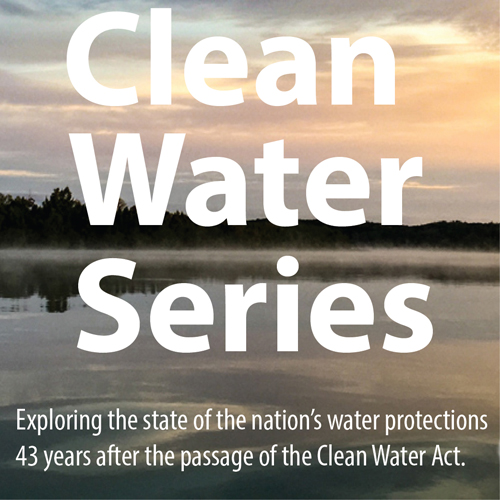

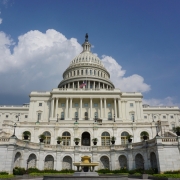
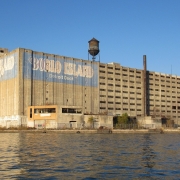


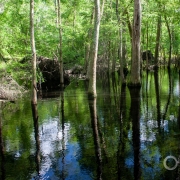
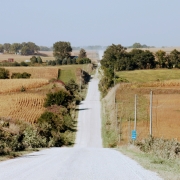



Leave a Reply
Want to join the discussion?Feel free to contribute!